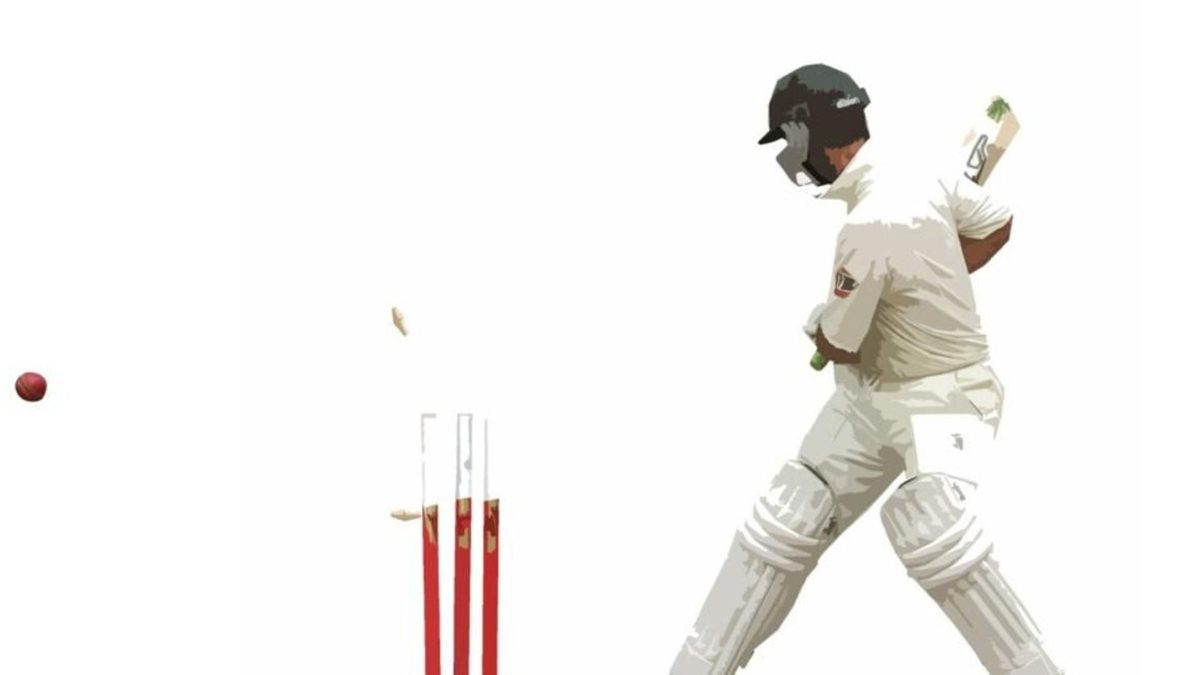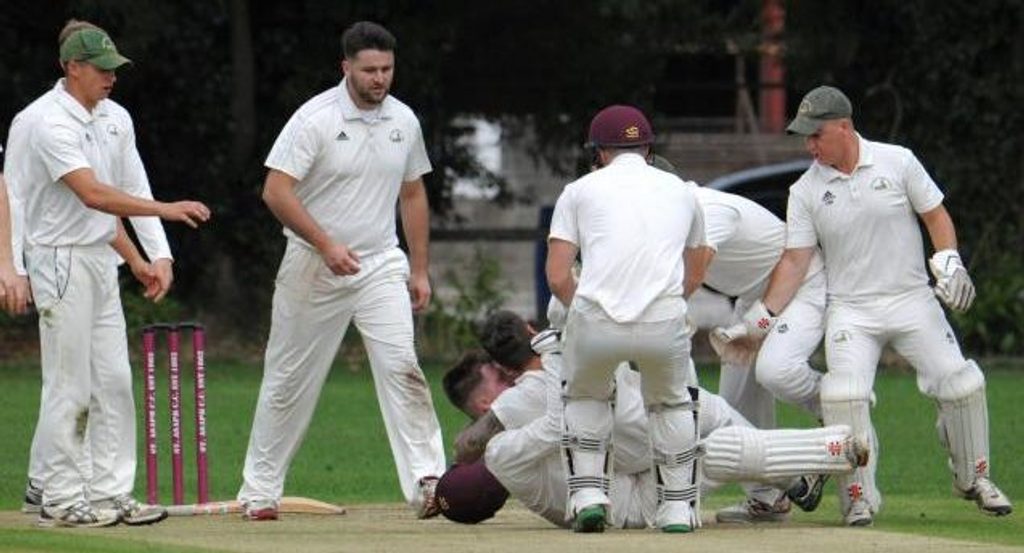
Wisden Cricket Monthly columnist and one-third of The Grade Cricketer, Sam Perry, discusses the age-old art of sledging and why it has a mythical status in Australia.
This article first featured in issue 15 of Wisden Cricket Monthly. Subscribe here
As is the custom at every club following a batsman’s dismissal, a summary of key on-field information is sought from remaining teammates still interested in the game. Of all the critical material the dismissed batsman might brief on – things like pitch conditions and bowler analysis – it’s alarming how often the question “Much chat out there?” leads the line of enquiry.
Sledging. Mental disintegration. ‘Chat’. It’s an object of fascination at club level in Australia. It’s not to be confused with good-natured conversation, verbiage, quippery, or other twee substitutes for dialogue. We are talking about personal hostility, whose cousins include swearing, invective, and so on.
[caption id=”attachment_94744″ align=”alignnone” width=”800″] For all the on-field chat, you’re unlikely to see matters escalate this far (credit: Phil Micheu)[/caption]
For all the on-field chat, you’re unlikely to see matters escalate this far (credit: Phil Micheu)[/caption]
It’s as old as time, and a quick perusal of the British or Australian parliaments will demonstrate it’s not the exclusive reserve of cricketers either. However, somewhere along the line it became synonymous with the Australian game. Advocates will tout it as a symbol of superior Australian competitiveness, toughness, or a demonstration of preparedness to go the extra mile in search of that intangible ‘edge’.
Some even refer to it as an art. This is a lie. In 95 per cent of cases it’s a frustrated, sweaty man swearing incoherently, usually due to a misplaced sense of injustice. Something did not go their way. Ergo, it is time to abuse.
For one reason or another, sledging in Australia has a mythical status: you tend to hear more stories about it than necessarily experiencing it yourself. But play long enough, and it will come.
[breakout id=”1″][/breakout]Embarrassment and humiliation are two regular themes. While sledging is popularly characterised as personal, below-the-belt insults which involve a modicum of preparation, it’s rarely that well thought out. It normally manifests as a hysterical laugh following a play-and-miss, followed by something like, “Oh my f***ing gawd!” Or, “Is this bloke serious?”
The victim is made to feel unwelcome, as though their mere presence is an insult to the skill level of all others. It’s about discomfort, unpleasantness, and the notion that your time in the middle should be as difficult as possible physically, mentally, emotionally, and spiritually. It’s a holistic health approach.
Then again, sometimes the sledges can surprise you. Ten years ago, in a run-of-the-mill third-grade game, I was bowled after not picking the ball up out of the sightscreen. Think Jasprit Bumrah to Keaton Jennings, except getting clean bowled. I had recently changed clubs in search of better opportunity, but had so far found none.
[breakout id=”2″][/breakout]Following my dismissal, amid the celebration and cacophony of laughter from the opposition, their captain, at second slip, bellowed, ‘F**k off back to Balmain!’ Balmain was my former club, and frankly I was buoyed to learn that he’d recognised me from previous matches. The sledger in question now holds fairly high office within the Australian cricket apparatus. I wonder if he’d recognise me now. I remember him.
However, like the mythical ‘line’ many in Australia’s national set-up refer to, you can normally find a parallel between those who ‘sledge’ and those who are angry, disillusioned, or just bored. The latter emotion is a curious one. Were the great Australians of the Nineties and Noughties a little bored themselves? Is too much credibility attributed to their superior verbal aggression?
Ask club cricketers who grew up in this era, and if they answered honestly you’d find many find sledging quite a difficult thing to balance with skill execution. It’s hard enough to consistently hit off stump, but to then follow up with a crisply delivered piece of verbal confrontation, and to then manage your new public enemy in full view of your teammates, can be a stretch too far.
[breakout id=”0″][/breakout]In the wake of the sandpaper fiasco, as Australia attempts to reconcile its relationship with aggression, many still argue that verbal hostility remains the highest manifestation of toughness. Of course, no other country agrees with this, both historically and presently.
The country needs to broaden its language on the issue. It is not a binary case of sledging is tough, and anything less is soft. In the middle ground is the Promised Land: a place where fast bowling continues apace, allied with respect for the opposition, and the fascination with whether there’s “much chat out there” slowly erodes from our line of enquiry altogether.
Read the previous article in the series: The champion net bowler








